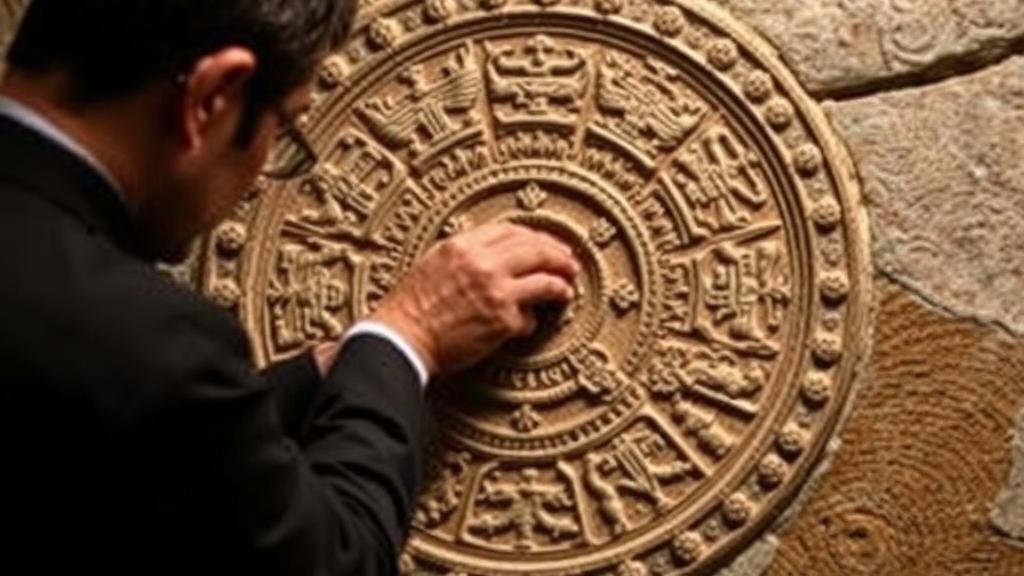Deciphering carvings in the “Circle of Eternity,†believed to reveal the cycle of life and death.
Deciphering Carvings in the “Circle of Eternityâ€
The “Circle of Eternity†is an ancient site located on the outskirts of the small village of Baumberg in central Europe, believed to have been created around 2500 BCE during the Neolithic period. This archaeological marvel features intricate carvings that embody the cycle of life and death, providing insight into the spiritual beliefs of early human civilizations. The carvings not only showcase artistic prowess but also convey profound philosophical concepts that resonate through millennia.
The Historical Context of the Circle of Eternity
The Circle of Eternity is thought to have been a ceremonial ground, serving as a site for rituals that focused on the cycles of nature and existence. Archaeological findings indicate that the area was used by early agrarian societies, who relied heavily on the surrounding landscape for survival. The establishment of such a sacred site highlights the importance of spiritual beliefs in relation to agricultural cycles and community identity.
Radiocarbon dating of artifacts found nearby suggests that the site was actively used for several centuries, indicating its significance in the social and ritual life of the community. Its pivotal to consider that these societies likely experienced a deep connection to the earth and its rhythms, which the carvings might be intended to encapsulate.
Understanding the Carvings
The carvings within the Circle of Eternity are complex and laden with symbolism, often depicting cyclical motifs that represent various life stages, from birth to death. Notable elements include:
- Spirals: Frequently interpreted as symbols of growth, the spiral form embodies the continuous nature of life. In many cultures, spirals denote journeys and cycles, suggesting that death is merely a transformation.
- Figures of Animals: Carvings of animals are believed to represent different aspects of existence. For example, the depiction of serpents may symbolize rebirth due to their ability to shed their skin, reinforcing the connection between life and death.
- Human Silhouettes: Engravings of human forms may indicate ancestral reverence, suggesting that the ancients believed in a kinship with their forebears. Such figures often appear in positions that suggest ritual or reverence.
Interpreting the Cycle of Life and Death
The overarching theme of the Circle of Eternity centers around the perpetual cycle of life and death, challenging the binary view of these two states. Several interpretations of this cycle can be extracted from the carvings:
- Life as a Process: The imagery suggests life is not a linear progression but rather a cyclical journey. This can be likened to the seasons, where after death (winter) comes rebirth (spring).
- Community and Continuity: The carvings reinforce that individuals are part of something greater–a community that exists beyond the physical world. Just as plants return to the earth, so too do humans return, nurturing the next generation.
Relevance in Modern Society
The insights provided by the Circle of Eternitys carvings are increasingly pertinent in contemporary discourse around mortality, sustainability, and community. In a world that often prioritizes individualism, the concept of threads connecting us to both our ancestors and the natural world is invaluable.
Modern spirituality and eco-conscious movements frequently echo messages found in the carvings, emphasizing the importance of a holistic view of existence. For example, many environmentalists advocate for living sustainably, reflecting the cyclical understanding of humans as part of nature. This perspective encourages practices that honor the earth and ensure future generations can thrive.
Conclusion
The carvings of the Circle of Eternity provide a window into ancient belief systems, highlighting how our ancestors understood life, death, and their interconnectedness. By studying these engravings, we can draw valuable lessons about sustainability, community, and the cyclical nature of existence that remain relevant today. As we continue to decipher these artistic expressions, we expand our understanding of humanity’s shared quest for meaning.
In summary, the Circle of Eternity is not merely an archaeological site; it is a profound testament to our ongoing dialogue with nature and existence itself. By embracing the lessons learned from these ancient carvings, we can cultivate a deeper appreciation for life and death as integral parts of our collective journey.



